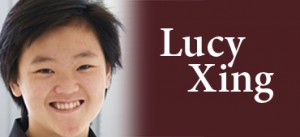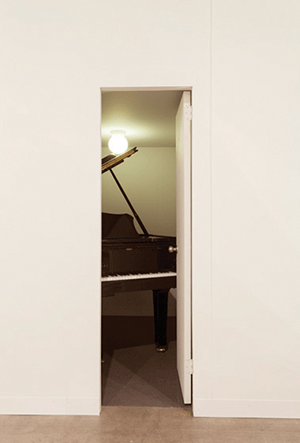Catch-22nd Symphony: The Paradox of the Timeless Doorway

AFTER I FINALLY WRAPPED my six-year-old head around the use of the double “that” in a sentence and agonizingly extrapolated the definition of “fib” from a difficult Franklin the Turtle read, I discovered that there was no better escape from reality than the arid conditions of Louis Sachar’s Camp Green Lake, an overnight stay at E.L. Konigsburg’s Metropolitan Museum of Art, or the strange assembly of characters and events in Carl Hiaasen’s towns. So, imagine my surprise when I found out that only a small, fortunate group of the masterful wielders of language—the world’s novelists—could sustain themselves on returns from their books without income from other, often less fulfilling day jobs. That those who would rather study the meaning of life’s minutiae without yielding immediately exploitable results suffer the modern devaluation of the arts in addition to the inner turmoil that already accompanies such complex examinations of humanity.
Artist Jorge Macchi highlights the plight of artistic intellectuals in his 2013 installation, Backstage, which consists of a cramped room only big enough to hold a grand piano when the sides of the instrument are pushed up against the bare walls, and the propped lid just barely avoids grazing the bulb-shaped ceiling light. Just as the room’s walls have closed in around the elegant instrument, so the twenty-first-century emphasis on the “next big thing” muffles the vibrant tones of musical drama, compelling language, visual depictions, and the interpretations of human nature that they carry.
 In choosing a grand piano for Backstage over an upright, Macchi alludes to a greater contrast of elegance and sterility as the grand tones travel effortlessly through the blank plasterboard walls, reaching the ears of all those in the vicinity, but also shrouding the music’s creator in anonymity. Furthermore, much of the ceiling light that illuminates the piano and its player to an outside viewer is not distributed to all of the room as a result of the raised lid, whose coating reflects the light back into itself almost as soon as it is emitted. At first glance, the minimal effect of this glow seems to be a consequence of the piano’s enormity, but in reality it is the confines of the room, the social and financial structures of modern society, that have diminished the light and the public’s appreciation of art. From the slim doorway of the room, onlookers never see the rigidity of the piano set in place by the walls, and audience members, the doctor or engineer whose job is generally accepted as serious and stressful, never see the torment and inhibitions that the pianist has grappled with backstage in preparation for the performance.
In choosing a grand piano for Backstage over an upright, Macchi alludes to a greater contrast of elegance and sterility as the grand tones travel effortlessly through the blank plasterboard walls, reaching the ears of all those in the vicinity, but also shrouding the music’s creator in anonymity. Furthermore, much of the ceiling light that illuminates the piano and its player to an outside viewer is not distributed to all of the room as a result of the raised lid, whose coating reflects the light back into itself almost as soon as it is emitted. At first glance, the minimal effect of this glow seems to be a consequence of the piano’s enormity, but in reality it is the confines of the room, the social and financial structures of modern society, that have diminished the light and the public’s appreciation of art. From the slim doorway of the room, onlookers never see the rigidity of the piano set in place by the walls, and audience members, the doctor or engineer whose job is generally accepted as serious and stressful, never see the torment and inhibitions that the pianist has grappled with backstage in preparation for the performance.
Perhaps the ideas of human nature expressed through artworks existed before and despite society’s efforts to stifle them, and perhaps the piano had occupied the space before the walls closed in to surround it. Moreover, the plaster material exposes the true fragility of the limits, a fragility necessary for the walls to operate as the artwork title suggests, opening up to a performance stage in front of an audience. This examination reveals modern society’s negligence of art’s value, as people unreasonably suppress artistic expression in favor of more “practical” skills, yet they maintain an intrinsic desire to witness such creative exhibitions of ideas.
As I’ve grown older, I’ve maintained a strong appreciation for authors and their works, but I’ve also become increasingly aware of the lack of racial diversity amongst these writers. Particularly in my community in Cupertino, California, where over 60 percent of the population is Asian and a vast majority of students enter computer science, medical, or business fields, the element of race adds an entirely new layer of complexity to the pre-existing stigma against pursuing liberal arts. We are expected to follow the stereotype of Asians in STEM fields (science, technology, engineering, and math), not only because of the academic emphasis on these subjects in school, but also because deviating from this norm to pursue the arts often carries too great a risk with the dominance of white voices in the arts working against us, in addition to the arts’ devaluation in general. So this decision to play it safe is unfortunately well founded. When weighing the most economically profitable college majors post-graduation, liberal arts majors rarely gather high on the list, especially when the top contenders include highly ranked engineering and biology programs at Stanford and UC Berkeley, where 23 percent and 42 percent of the respective student bodies are Asian. Today, art and humanities majors’ twenty-year net return on investments are approximately one-third that of business and computer science majors, with the latter reaching significantly over $1 million and the arts consistently held below half a million dollars even at top universities.
Macchi himself reflects an extent of the inhibitions specific to hopeful artists, writers, and musicians of color. For despite garnering critical acclaim in his home country of Argentina, as well as in much of Europe, he is relatively unknown in the United States, revealing the deliberate limits in place to keep American culture as the focal point for the general public (with nods toward the works of minorities creating a facade of unbiased inclusivity while maintaining intrinsically American viewpoints). Backstage highlights this in the fragile balance of the piano lid beneath the light, calling attention to the cautious delicacy with which aspiring artists must approach their goals in order to receive appreciation from others without completely disrupting the course of social norms.
Though the bulk of Macchi’s work lies in visual arts, enough of his displays reflect the role of music in society to betray his passion as a former pianist and his lasting connection with that form of art. In his video projection, 12 short songs, a hand mechanically winds a primitive wooden music box to produce light, jangling chimes in accordance with the perforations of such phrases as “Colossal Job Losses in the US” and “Swine Flu Worsens Global Economic Crisis. This piece, along with many of Macchi’s other works, including Backstage, demonstrates the impact of art and human expression in the modern world as they pervade nearly every element of humanity, transcending systems of economic and political status that rely on a contrived, superficial nature. But 12 short songs, created four years before Backstage, only straddles the then-widening gap between advanced technology and preservation of original practices as there was still room for the hand-operated, individual music box to coexist with the efficiently manufactured aspects of life. By the time Macchi approached the elegance and influence of the grand piano in 2013, the walls had significantly closed in around such personal forms of art and their artists, leaving very little room for both genuine expression and prosperity, instead demanding a disproportionate sacrifice for meaningful expression.
This sacrifice, which extends beyond the financial restraints that may inevitably come with artistic pursuit, often calls for introspection in the face of emotional turmoil. This adds to the suffocating atmosphere of Macchi’s room a pressure that comes from within rather than solely the stigma from without. In this sense Backstage encompasses my childhood realization about most artists’ startlingly minimal income for their devotion and influence, as well as the trials and tribulations of generations of famous artists as the walls closed in around their works: Vincent van Gogh struggling with manic depression and creating the swirling, distorted landscape of Starry Night, Edvard Munch evoking his chaotic emotions with the chaotic colors and structure of The Scream, Sylvia Plath suffering from bipolar depression and transforming her emotions into prose on the pages of her journal. These artists have all managed to strike the right balance between the piano lid and the light, attaining a lasting fame, but sacrificing much of their personal stability in the process.
But despite the challenges that a commitment to art entails, artists continue to demand only the grandest instrument of creative expression, and continue to prop open its lid to the greatest height, knowing full well the limitations of their compact space in this world.
In their cramped space, the artists perched at the keys cannot see the ceiling bulb itself, but they do see the light that the bulb casts, enough for the power of innovation to take hold, compelling them in their pursuit of artistic endeavors. And it was the eloquent language of those who saw through the artificial walls around them, to the door’s timeless possibility, that pervaded my childhood and helped me understand the world in deeper ways.
